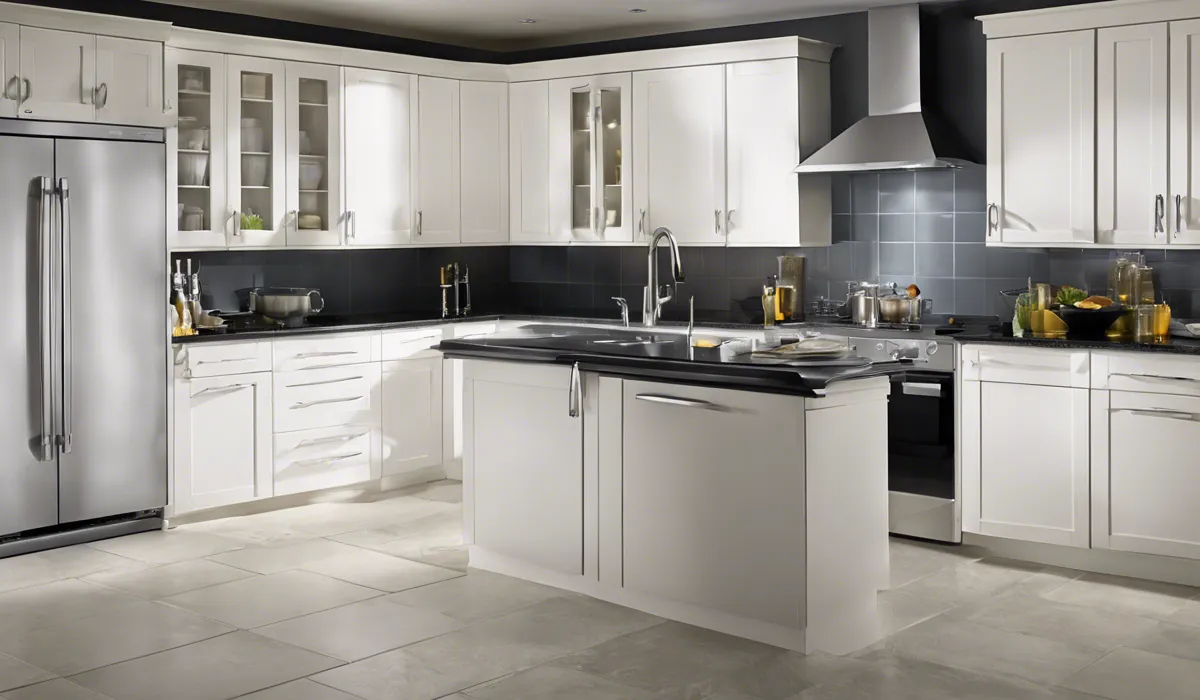Can a Built In Dishwasher Be Freestanding? Pros & Cons Revealed
A built-in dishwasher is not designed to be freestanding. It lacks the finished sides and top necessary for freestanding use. Additionally, built-in models typically require secure installation to cabinets and countertops for stability.
Understanding Built-In and Freestanding Dishwashers

Definition of Built-In Dishwashers
Built-in dishwashers are designed to seamlessly integrate into your kitchen cabinetry.
They are typically installed underneath a countertop and are connected to the home’s water supply and drainage systems. Built-in dishwashers offer a streamlined look and save kitchen space, as they do not protrude into the room.
Definition of Freestanding Dishwashers
Freestanding dishwashers are versatile appliances that can be placed anywhere in the kitchen, provided they have access to water and drainage. They have finished sides and top, allowing them to stand alone without the need for cabinetry support.
Key Differences Between Built-In and Freestanding Dishwashers
The main differences between built-in and freestanding dishwashers lie in their design and installation.
Built-in dishwashers are fixed in place and offer a custom fitted appearance, while freestanding models can be moved and are more flexible in terms of placement.
Built-ins typically require a more complex installation process involving permanent connections to the kitchen’s plumbing and electrical systems.
Factors to Consider Before Converting a Built-In Dishwasher to Freestanding

Space and Placement Considerations
When considering making a built-in dishwasher freestanding, it’s crucial to think about where it will be placed.
You will need to ensure there is enough room for the dishwasher to open fully and for you to load and unload dishes comfortably. It’s also important to consider the proximity to water and power sources.
Plumbing and Electrical Requirements
The plumbing and electrical setup for a freestanding dishwasher may be different from that of a built-in. You might need to adjust the lengths of hoses and cables or even add new connectors to accommodate the new location of the dishwasher.
Ventilation and Heat Dissipation
Ventilation is an important factor to consider, as dishwashers generate heat and moisture during operation. A built-in dishwasher has specific ventilation requirements that may not align with a freestanding setup.
You’ll need to ensure that the converted dishwasher has enough space around it for proper air circulation.
Stability and Support Issues
A built-in dishwasher is designed to be supported by cabinetry. Without this support, a freestanding dishwasher may face stability issues. It’s crucial to create a stable base and possibly add external panels to ensure the dishwasher remains upright and secure during use.
Aesthetic and Design Implications
Moving a built-in dishwasher out into your kitchen space can have aesthetic implications.
The unfinished sides and top that were once hidden by cabinetry will now be exposed. You may need to consider adding a custom panel or painting the dishwasher to match your kitchen’s design.
How to Convert a Built-In Dishwasher to a Freestanding Unit

Step-by-Step Guide on Conversion
To convert a built-in dishwasher into a freestanding unit, you will begin by carefully disconnecting and removing the dishwasher from its current location.
Next, you must create a stable base and secure any loose parts. Ensure all connections to water and power are extended and safely rerouted to the new location.
Tools and Materials Needed for the Conversion
The conversion process requires various tools and materials, including screwdrivers, a drill, hoses, electrical wiring, and potentially plywood or other materials to create side panels or a top for the dishwasher.
Tips for Ensuring Safety and Functionality
Safety is paramount when converting your dishwasher. Always disconnect the power supply before starting work, and test all connections thoroughly for leaks or electrical issues before using the dishwasher in its new freestanding position.
Maintenance Differences for a Converted Dishwasher
A converted dishwasher may require different maintenance than when it was built-in. Freestanding dishwashers are more accessible for repairs and servicing, but you should regularly check connections and stability to prevent any potential problems.
FAQs About Built-In Dishwasher Installation
Can a built-in dishwasher be used as a freestanding unit?
No, a built-in dishwasher is not designed to be used as a freestanding unit as it lacks finished sides and top.
Do built-in dishwashers need to be secured to cabinets?
Yes, built-in dishwashers typically require secure installation to cabinets and countertops for stability.
Will a built-in dishwasher have a finished exterior if removed from cabinetry?
No, built-in dishwashers do not have a finished exterior suitable for display when removed from cabinetry.
Can I install a built-in dishwasher without attaching it to the surrounding cabinetry?
It is not recommended to install a built-in dishwasher without attaching it to cabinetry as it may lead to instability and operational issues.
What happens if a built-in dishwasher is used freestanding?
Using a built-in dishwasher freestanding can result in instability, potential water damage, and may void the warranty.
Final Thoughts
A built-in dishwasher is not suitable for freestanding use due to its unfinished sides and top and the need for secure attachment to cabinets and countertops.
These design elements are essential for the appliance’s stability and aesthetic integration within kitchen cabinetry.





